
Sculptures in the Schönbrunn Garden
Encyclopedia

The numbering shows the situation of the statues.
Left side
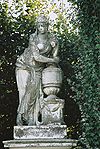 |
 |
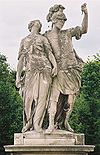 |
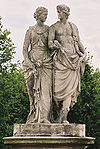 |
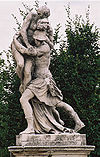 |
|
| 1 Artemisia II of Caria Artemisia II of Caria Artemisia II of Caria was a sister, the wife and the successor of the king Mausolus. She was a daughter of Hecatomnus, and after the death of her husband she reigned for two years, from 353 to 351 BC... wife of Mausolus Mausolus Mausolus was ruler of Caria . He took part in the revolt against Artaxerxes Mnemon , conquered a great part of Lycia, Ionia and several Greek islands and cooperated with the Rhodians in the Social War against Athens... |
2 Calliope Calliope In Greek mythology, Calliope was the muse of epic poetry, daughter of Zeus and Mnemosyne, and is now best known as Homer's muse, the inspiration for the Odyssey and the Iliad.... , muse Muse The Muses in Greek mythology, poetry, and literature, are the goddesses who inspire the creation of literature and the arts. They were considered the source of the knowledge, related orally for centuries in the ancient culture, that was contained in poetic lyrics and myths... of poetry Poetry Poetry is a form of literary art in which language is used for its aesthetic and evocative qualities in addition to, or in lieu of, its apparent meaning... |
3 Brutus Lucius Junius Brutus Lucius Junius Brutus was the founder of the Roman Republic and traditionally one of the first consuls in 509 BC. He was claimed as an ancestor of the Roman gens Junia, including Marcus Junius Brutus, the most famous of Caesar's assassins.- Background :... holds the dagger Dagger A dagger is a fighting knife with a sharp point designed or capable of being used as a thrusting or stabbing weapon. The design dates to human prehistory, and daggers have been used throughout human experience to the modern day in close combat confrontations... in the hand, with which Lucretia Lucretia Lucretia is a legendary figure in the history of the Roman Republic. According to the story, told mainly by the Roman historian Livy and the Greek historian Dionysius of Halicarnassus , her rape by the king's son and consequent suicide were the immediate cause of the revolution that overthrew the... committed suicide |
4 Ceres the goddess of the agriculture, the marriage and death and Bacchus Dionysus Dionysus was the god of the grape harvest, winemaking and wine, of ritual madness and ecstasy in Greek mythology. His name in Linear B tablets shows he was worshipped from c. 1500—1100 BC by Mycenean Greeks: other traces of Dionysian-type cult have been found in ancient Minoan Crete... , the God of the viticulture and the vegetation |
5 Aeneas Aeneas Aeneas , in Greco-Roman mythology, was a Trojan hero, the son of the prince Anchises and the goddess Aphrodite. His father was the second cousin of King Priam of Troy, making Aeneas Priam's second cousin, once removed. The journey of Aeneas from Troy , which led to the founding a hamlet south of... escape from Troy Troy Troy was a city, both factual and legendary, located in northwest Anatolia in what is now Turkey, southeast of the Dardanelles and beside Mount Ida... |
|
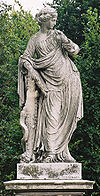 |
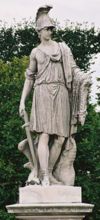 |
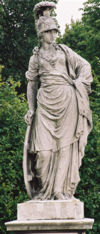 |
 |
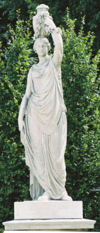 |
|
| 6 Angerona Angerona In Roman mythology, Angerona or Angeronia was an old Roman goddess, whose name and functions are variously explained. She is sometimes identified with the goddess Feronia.... |
7 Jason Jason Jason was a late ancient Greek mythological hero from the late 10th Century BC, famous as the leader of the Argonauts and their quest for the Golden Fleece. He was the son of Aeson, the rightful king of Iolcus... , robbed the Golden Fleece Golden Fleece In Greek mythology, the Golden Fleece is the fleece of the gold-haired winged ram, which can be procured in Colchis. It figures in the tale of Jason and his band of Argonauts, who set out on a quest by order of King Pelias for the fleece in order to place Jason rightfully on the throne of Iolcus... with the Argonautes |
8 Aspasia Aspasia Aspasia was a Milesian woman who was famous for her involvement with the Athenian statesman Pericles. Very little is known about the details of her life. She spent most of her adult life in Athens, and she may have influenced Pericles and Athenian politics... , Greek Philosopher and the second wife of Pericles Pericles Pericles was a prominent and influential statesman, orator, and general of Athens during the city's Golden Age—specifically, the time between the Persian and Peloponnesian wars... |
9 Omphale Omphale In Greek mythology, Omphale was a daughter of Iardanus, either a king of Lydia, or a river-god. Omphale was queen of the kingdom of Lydia in Asia Minor; according to Bibliotheke she was the wife of Tmolus, the oak-clad mountain king of Lydia; after he was gored to death by a bull, she continued... |
10 Flora's Flora (mythology) In Roman mythology, Flora was a goddess of flowers and the season of spring. While she was otherwise a relatively minor figure in Roman mythology, being one among several fertility goddesses, her association with the spring gave her particular importance at the coming of springtime... Nymph Nymph A nymph in Greek mythology is a female minor nature deity typically associated with a particular location or landform. Different from gods, nymphs are generally regarded as divine spirits who animate nature, and are usually depicted as beautiful, young nubile maidens who love to dance and sing;... |
|
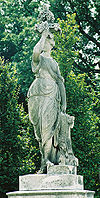 |
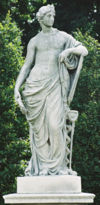 |
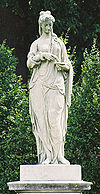 |
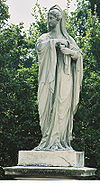 |
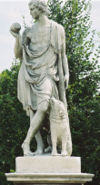 |
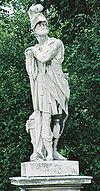 |
| 11 Bacchante Maenad In Greek mythology, maenads were the female followers of Dionysus , the most significant members of the Thiasus, the god's retinue. Their name literally translates as "raving ones"... |
12 Apollo Apollo Apollo is one of the most important and complex of the Olympian deities in Greek and Roman mythology... |
13 Hygieia Hygieia In Greek and Roman mythology, Hygieia , was a daughter of the god of medicine, Asclepius. She was the goddess/personification of health , cleanliness and sanitation. She also played an important part in her father's cult... godness of health. |
14 Vestal Virgin Vestal Virgin In ancient Roman religion, the Vestals or Vestal Virgins , were priestesses of Vesta, goddess of the hearth. The College of the Vestals and its well-being was regarded as fundamental to the continuance and security of Rome, as embodied by their cultivation of the sacred fire that could not be... |
15 Paris Paris (mythology) Paris , the son of Priam, king of Troy, appears in a number of Greek legends. Probably the best-known was his elopement with Helen, queen of Sparta, this being one of the immediate causes of the Trojan War... |
16 Hannibal |

